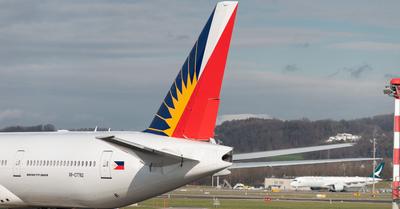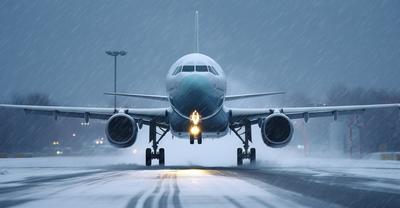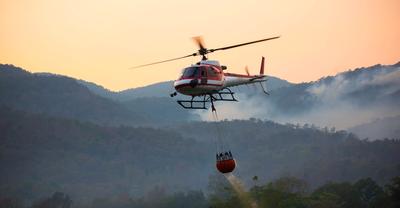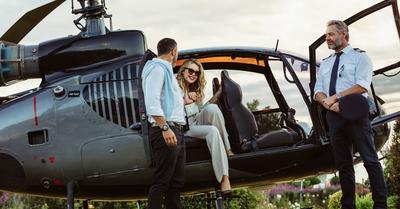This article may contain affiliate links where we earn a commission from qualifying purchases.
As a passenger on a long flight, you might try to get some sleep, watch a movie, or maybe even catch up on some work. But what do pilots do?
During long flights, pilots have plenty of things to do to keep themselves busy. While flying, pilots will either be actively flying the plane, checking fuel levels and flight time, sleeping, contingency planning for anything that might happen, and planning for a safe arrival and landing.
As a passenger on a long flight, there are lots of options for things you can do to pass the time. But what about the pilots? What do they do? In this article, you’ll learn about all the things that pilots need to do during long flights — it’s not as simple as laying back and putting their feet up while autopilot does everything!
By combining our own piloting experience with input from other pilots and other leaders in aviation, we’re able to provide our readers with the most helpful content in every article we publish. This one is no exception. Everything you read below comes straight from pilots themselves (as well as industry standards) for what pilots actually do during long flights.
What Do Pilots Do During Long Haul Flights?
Whether a flight seems long just to you or it’s actually classified as a long haul flight, it can get boring up there for all that time. Technically, a long haul flight is any flight that’s over 7 hours in duration. But to most people, a flight across the US (about 4-5 hours) still seems pretty long. As a passenger, you can do all sorts of things during the flight to keep yourself busy.
If you’re like many people (including myself), you might try to get some sleep during the flight. Nothing is better than falling asleep during takeoff and being woken up by the feeling of the plane landing at your destination. If sleeping in the air isn’t your thing, you can watch movies, talk to friends and family, catch up on some work, and all sorts of other things.
Pilots, however, don’t have that luxury to just do anything that they want during long flights. After all, they have to actually fly the plane. Autopilot might make flying an airplane easier than ever before, but the pilots still need to pay attention and always be able to take control at a moment’s notice. So what do pilots do during long flights?
How Do Pilots Stay Busy During Long Flights?
There are actually all sorts of things that pilots can do while the plane is cruising, even if autopilot is doing most of the flying for them. Of course during takeoff and landing, the pilot is actively flying the plane, but during the cruise, pilots have plenty of tasks to attend to to keep themselves busy. Let’s take a look.
Check Fuel Levels And Time
Soon after reaching cruise altitude and speed, autopilot will typically be used to handle much of the cruise. At this point, the pilots will typically start by checking fuel levels to ensure there is enough fuel for the entire trip. This will also help the pilots to determine whether there is any sort of fuel leak or anything like that that they need to figure out.
Alongside the fuel check, pilots will also check the time. They’ll check the flight time as well as local time and the time and the final destination. While flying, pilots will use UTC time to keep track of everything since time zones will change periodically. The time check is important to make sure that the flight is on time so that they can update ATC as needed.
Sleeping
Yes, that’s right. Even pilots are able to get some shut-eye during the flight. If the thought of your pilot getting some sleep during a flight scares you, don’t worry. There are all sorts of fail safes and rules in place that pilots must follow. So it isn’t like the pilot is just neglecting their duties to get some sleep! We’ll go into more detail on how pilots sleep in the next section.
Contingency Planning
One of the biggest things that pilots must always be doing during a flight, no matter how long or how short it is, is preparing for as many things as they can. That way, no matter what happens, the pilots and crew will have a plan of action and be able to figure out whatever the issue is so that they can safely handle the situation and keep everyone on board as safe as possible.
Some of the things that the pilots will have on their mind at just about all times during any given flight include:
- How can we avoid the severe weather in our flight path?
- What happens if an engine fails?
- What if a passenger or crew member falls ill or has an issue like a heart attack?
- What happens if the aircraft pressurization system fails?
- What if the plane begins leaking fuel?
- Where is the closest airport we can land at in the event of a problem?
And more. Pilots are trained to always have a plan of action for just about anything that happens. The biggest responsibility of a pilot at any time is the safety of everyone on board.
Planning For Arrival At The Destination
As any experienced pilot will tell you, landing is almost always the most difficult part of any flight, barring anything unexpected happening during the rest of the flight. So as the plane is approaching the final destination, pilots and crew will start planning for arrival to make sure everything goes as smoothly as possible.
Pilots will communicate with ATC to get the weather conditions on approach, which runway they need to start aiming for, and the type of approach that ATC wants them to make. With the conditions in mind, the crew will perform a landing distance calculation to ensure there is a safe distance to land once the time comes.
Can Pilots Sleep During Long Flights?
Just like passengers, pilots can often catch some sleep during a flight. But they have more rules to follow than the passengers do. It all depends on how long the flight is, how many pilots there are, and what type of sleep we’re talking about. To get a better idea of how pilots sleep during flights, check out our full article on the topic here. We’ll hit the key points here though.
On most short flights (such as most domestic flights here in the US), there are two pilots — the captain and the first officer. Since there are two pilots, one of them is allowed to get some sleep using controlled rest. This is basically just when the pilot sleeps in their seat, with 10 - 20 minute power naps. The key to this type of rest is that the other pilot must stay awake and alert at all times.
For long haul flights, there are typically more than just two pilots. Usually, there will be two pairs of pilots, so at least a total of four pilots. On these flights, the extra pilots (known as heavy crew) will take over the flight once the plane is cruising. The captain and first officer will then head to sleep using bunk rest, where they have reserved areas to sleep.
After a time, the main pilots will return to the controls before landing. While the heavy crew is flying, they can use the same in-seat rest described above. The key to any sort of pilot’s sleep while flying is that someone must be awake, alert, and at the controls at all times.
Does Autopilot Do Most Of The Flying On Long Flights?
Although pilots do have plenty to do during the flight as you saw above, autopilot certainly makes flying modern aircraft far easier than it ever has been. Although some of the most advanced autopilot systems of today can do the entire flight, including takeoff and landing, most of the time the pilot will still handle those two aspects of the flight.
Autopilot systems really take a lot of the busy work away from the pilot, but even with autopilot on, pilots can’t just do whatever they want! In fact, pilots can’t even leave the cockpit even if autopilot has total control of the aircraft. This is because, under the Federal Aviation Regulations, there always has to be a pilot at the controls no matter what.
That said, autopilot does make long flights significantly easier for pilots. So yes, autopilot does in fact do most of the flying on long haul flights. But the pilots still need to be ready to go at a moment’s notice.














